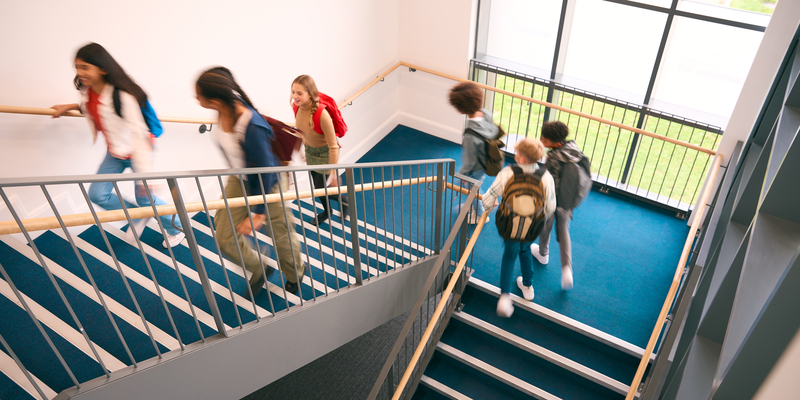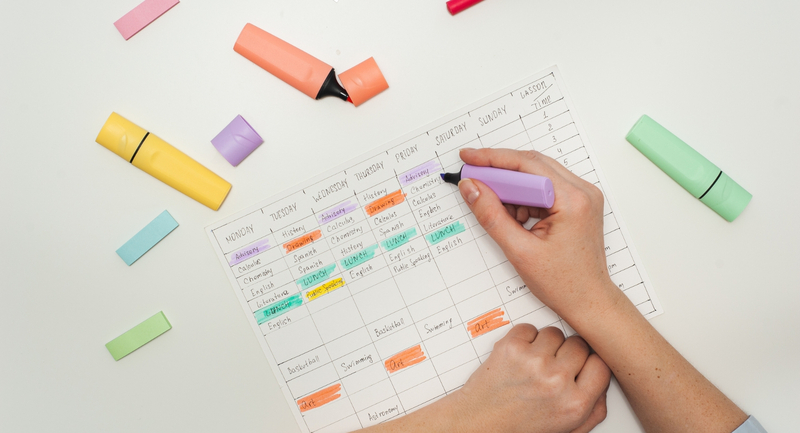I ended the school year sitting in on a wonderfully positive teacher share out with teacher-led teams at Charles E. Brown Middle School in Newton, Massachusetts. When it was over, a teacher leader, who I had been working with all year, asked me, “We are not sure how much meeting time we will have in these teams next year. What are the most important things we should be doing together in the time that we get?”
When I work in a school as a consultant, educators in the room inevitably think of me as “the team lady.” She’s here to work with leaders to help our PLC teams be more productive. They’re partially right: Teaming is the vehicle for what I do; student learning is always the outcome. With this in mind, I responded to the teacher leaders, “Always lead with intention. Because you want to nurture a collaborative culture, I recommend you focus on three things: read together, conduct peer observations, and look at student work together.”
As these practices become habits, teams learn to cultivate diverse perspectives, ground disagreement in text-based ideas (not personal attacks), promote intentional data use, and focus team meetings on what collaboration is ultimately about—improving student learning.
I present these and other effective teaming practices in my new book, Intentional Moves: How Skillful Team Leaders Impact Learning (SAGE Publications), which details nearly 150 strategies for educators who lead a team and want to achieve better outcomes for their teachers and students.
1. Build a Collective Reading/Viewing Habit
Reading education texts and viewing videos and podcasts on your own might fill you with ideas and possibilities, but discussing these resources with your colleagues adds a dimension of learning that cannot be achieved alone.
Here are a few skillful team leader moves to help your team develop a reading/viewing habit:
- Start small. If your school doesn’t designate PD or team time for collaborative reading, begin introducing short, engaging texts (e.g., a relatable cartoon, a controversial quote, an inspirational excerpt from a podcast) and work up to longer texts (e.g., a short passage from a chapter, an Educational Leadership article, a summary of a research paper, or an optional book study). Soon your colleagues will expect to engage in text-based discussions in your meetings.
- Structure the conversation in a way that promotes discussion. I’m a huge advocate of text-based discussion protocols (e.g., four a’s, three levels of text, the final word), but I know that they can be time-consuming or feel restrictive. Don’t avoid reading a text together for this reason. Sometimes all you need to launch a text-based team discussion is a good prompt. Turning a title into a question is a simple way to do this. For example, school DEI director Osamagbe Osagie asked her team: “Given this article’s provocative title, Growing Up Black in All the Wrong Places, what will it take for us to create a world that is comfortable and safe for individuals who are Black, Indigenous, Latinx, Asian, and multiracial to grow and thrive in?”
- Ground conversation in text. Reading a shared text with your team can generate great ideas but can also detour your colleagues away from the text. Gently bring people back with questions such as, Where in the text did you see that? What did you read that prompted you to share that? What does the text say about this?
2. Develop a Peer Observation Habit
Teams in high-performing schools are in and out of one another’s classrooms regularly. Think of peer observations as the difference between going to a movie alone and coming back to tell your friends about it versus seeing a movie with friends, catching a bite afterwards, and talking about what you saw together.
Here are a few skillful team leader moves to develop a habit of conducting peer observations:
- Set a specific purpose for each observation. Walking into a colleague’s classroom to observe a lesson can be a kid-in-a-candy-store moment: so much to see, so many great ideas you want to take with you. It’s fine for the first observation to be unstructured, but for subsequent ones be clear about what people should be looking for and connect it to what your team is studying. For example, a team pursuing the question, “How do we guide appropriate student goal-setting in writing?” created guides and checklists as recommended by the UDL guidelines. One team member modeled for students how to use them, while teachers observed and made note of student questions as they applied the checklists to their own writing.
- Decide what to observe. You don’t need to observe a lesson in its entirety. Your team might write or review a lesson plan together, but then decide to only demonstrate a portion of that lesson to examine together.
- Decide a means for collecting data. Guided by your purpose, decide what data your team will collect to help your team debrief afterward. Some examples might include taking photos of student work, recording audio of student pairs talking, or taking two-column notes where educators record what the teacher is doing/saying in the left-hand column and what students are doing/saying in the right-hand column.
- Choose an observation method. Live and pre-recorded lessons are effective methods for peer observation, but there is also a benefit to doing “dry demos.” Like a “dry tech rehearsal” that runs lights and sound cues without actors present, a dry demo has a team member demonstrate a lesson to colleagues without students present. Although your team will not be able to see how students respond to instruction, it is an effective way to try on strategies before implementing them in a classroom. Some teachers might feel less pressure to perform given they know they can have a “redo” moment at any point in the demonstration. As you make peer observation a habit, consider mixing and matching these methods throughout the year so that your team can experience the benefits of each.
3. Look at Student Work Together
Even if you can’t get into one another’s classrooms regularly, the next best thing is to look at student work together. To make this a meaningful habit, take turns bringing in student work to analyze with your colleagues that follows an ARC:
- Authentic samples that represent a real concern or dilemma for the presenting teacher(s). If everyone already knows what the data means and what to do about them, then data analysis will fall flat.
- Relevant samples that pertain to your team’s inquiry study and goals. If your colleagues can’t see a connection to their work, they might question the point of analyzing the student samples.
- Current samples from formative assessments where the time between teaching, assessing, and analyzing samples is short so that teachers can immediately implement next steps with students. If too much time lapses, teachers won’t be able to reteach, intervene, or enrich when students need it.
Small Moves Make Lasting Habits
While you could immediately start your team on a weekly peer observation rotation, launch a six-week book study, or create a yearly sign-up to share student work, this isn’t a “go big or go home” approach. It’s enough to start with small, intentional moves to gradually build a culture of trust, where you and your colleagues practice being vulnerable with one another. In time your team will view reading together, observing one another teach, and looking at student work together not only as practices you do in meetings, but as healthy collaborative habits that transform learning.








